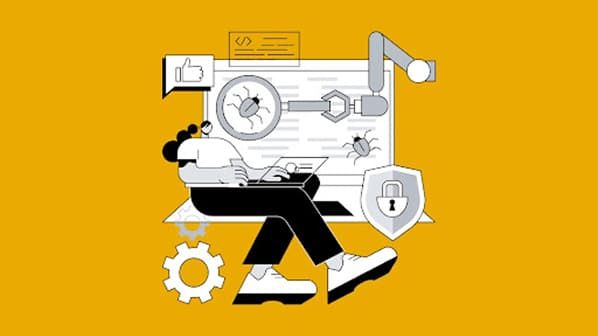In this tangled web of a digital age we’re living in, keeping data secure isn’t just wise; it’s a must. The bad guys lurk in every shadow, their threats not just clever but ever-evolving. And with pitfalls stacking up like unopened mail, both folks and companies have to scramble, grabbing advanced tools and tried-and-true tactics to protect their cherished info. Here’s a look at some of those key tools and strategies, all aimed at building a fortress around your data.
A Brief Guide to Construction Jobs

1. Use Encryption Protocols for Data Protection
Here’s the meat of it: encryption is one of the best guns in your arsenal against data compromise. Think strong encryption, AES-256 for your data that’s just sitting around, and Transport Layer Security (TLS 1.3) for precious bits flying through cyberspace. These methods keep the snoopers out, ensuring critical info isn’t up for grabs. For children of the database world, column-level encryption is your best friend, zeroing in on sensitive stuff like financial details or health records. Additionally, disk encryption should be used to prevent unauthorized access to data on physical devices if lost or stolen.
2. Implement Multi-Factor Authentication (MFA)
Multi-Factor Authentication is pivotal for granting access to those juicy, sensitive systems. Unlike old-school password setups, MFA mixes a few tricks, a password you recall, a special code buzzing on your unique gadget, or your fingerprint. This trick, a mix of knowledge, possession, and identity, crushes that risk of someone running away with your credentials. Even if passwords get mishandled, you’ve got layers to turn back the marauders. Companies ought to turn to adaptive MFA as their go-to shield, custom-fit to devices and user behaviors.
3. Tap into Advanced Security Tools
Now, let’s get tech-savvy. Battling contemporary cyber threats calls for solid data security tools. Common use includes:
1) Antivirus and Endpoint Security Solutions: Solutions that detect, prevent, and remove malicious applications from individual appliances or networks.
2) Intrusion Detection/Prevention Systems (IDS/IPS): IDS inspects networks for policy violation or malicious access, while IPS proactively blocks detected threats.
3) SIEM Solutions (Security Information and Event Management): SIEM solutions collect, monitor, and report security events to enable organizations to detect anomalies and respond to potential breaches in real-time.
4) Virtual Private Networks (VPNs): VPNs secure internet communications by encrypting data transmission, building a secure tunnel even over untrusted networks.
5) Firewall Systems: Hardware and software-based firewalls act as gatekeepers, regulating incoming and outgoing traffic based on pre-defined security policies.
4. Secure Development and Application Management
Security for software and databases has to be a priority at the development level. Adopt the following best practices:
1) Adopt Secure Development Lifecycle (SDLC): Include provisions at all phases, starting with threat modeling at design stage up to penetration testing post-deployment. Adoption of static analysis tools and vulnerability scanning ensures a proactive approach towards detecting vulnerabilities.
2) API Security Guidelines: Employing the OAuth 2.0 or OpenID Connect frameworks gives secure authentication for APIs. Applying these alongside methods like rate limiting and policy-based access prevents APIs from being abused or misused.
5. Make Regular Backups a Staple
3-2-1 rule isn’t just chatter; it’s solid advice for ducking under that lingering threat of data loss. Keep three data copies (original + two backups), use two different types of media for storing them, and hold one copy hostage in an off-site location. Don’t forget about encryption for those backups and make sure they get checked regularly. Organizations must also automate backup timing to provide around-the-clock reliability while safeguarding against ransomware attacks and unintended deletions.
6. Keep an Eye on Data Access
Monitoring who’s looking at sensitive info is also a decent plan. Regular audits mean you track peeks—who’s logging in, modifying data, pressing export. It helps keep everyone in check, supporting those cybersecurity protocols we can’t ignore. And strange access should send alarms ringing, allowing auto responses to fend off would-be intruders. Put all the audit trails down for any necessary forensics later.
Summary
It’s no small potatoes wiring together both cutting-edge tech and sound practices for data security. Combining encryption protocols, state-of-the-art tools like SIEMs and VPNs, and robust security frameworks like MFA and SDLC, organizations and individuals can stay ahead of cyber threats. With a heavy lean toward security awareness and regulation compliance, we stand taller against data breaches. Here’s to building trust in this wild digital world.


Guess you like
-

Uncovering the 10 Best Xbox Easter Eggs for Fans
-

Eight Clues Can Show Your Refrigerator is Overly Cold
-

Why Chatbots Make Things Up Now and Then and What That Portends for Us
-

Top Distraction-Free Writing Apps Every Writer Should Be Familiar With
-

Know Hydroplaning and How to Be Safe
-

How to Stencil Pastries with Daily Kitchen Tools
Trending
-
 1
1Practical Diagnostics That Actually Work Before Your Next Router Purchase
-
 2
2A Bittersweet Return: Syberia Remastered Review
-
 3
3Electric Trucks Falter in the U.S. — The High-Stakes Struggle Behind the Wheels
-
 4
4Amazon’s New AI Tool Translates Kindle E-Books for Self-Published Authors
-
 5
5Stellantis, NVIDIA, Uber and Foxconn Unite on Level 4 Robotaxis
-
 6
6How to Upgrade Weapons and Workbenches in ARC Raiders


